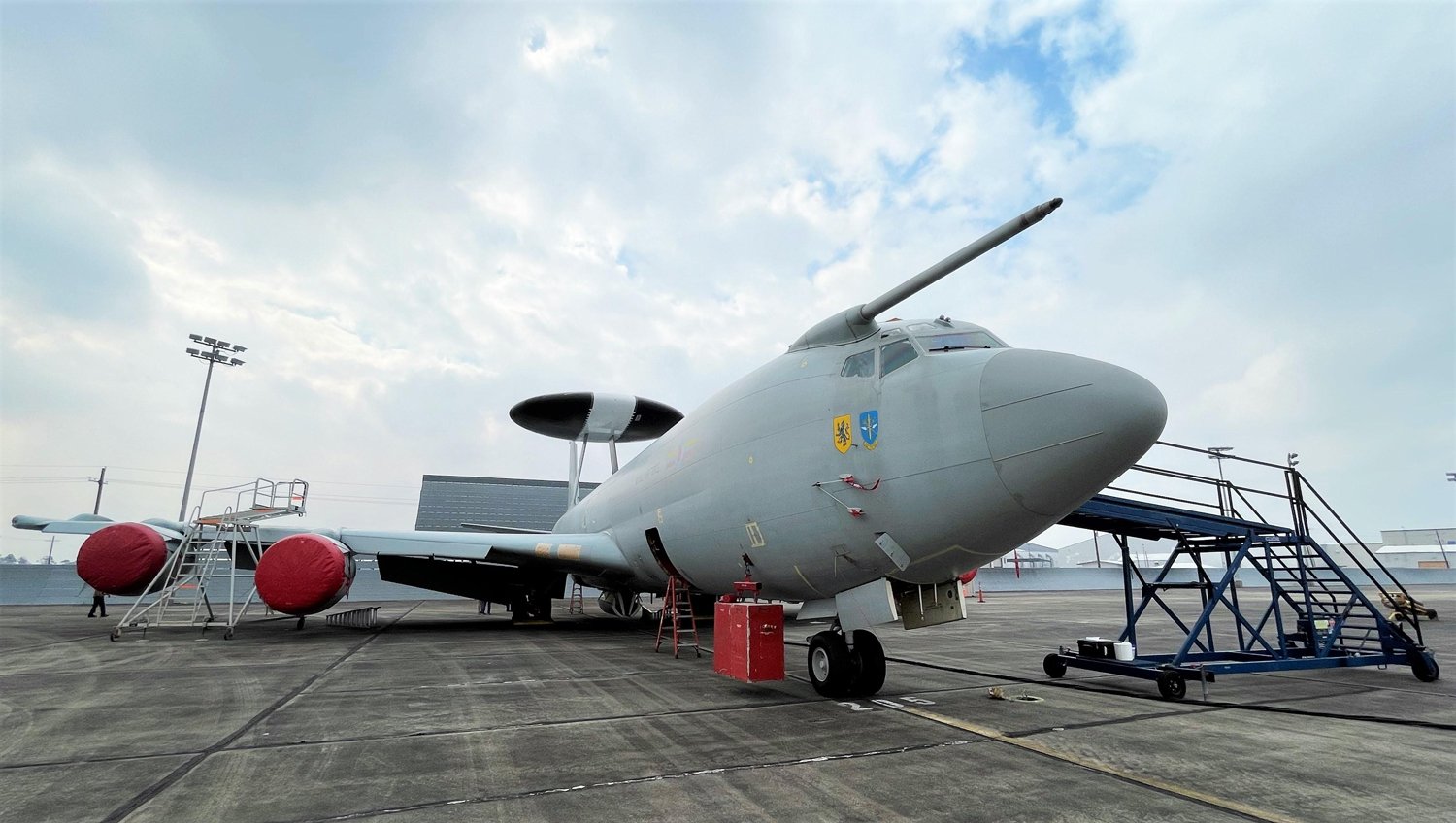Click Here to View This Page on Production Frontend
Click Here to Export Node Content
Click Here to View Printer-Friendly Version (Raw Backend)
Note: front-end display has links to styled print versions.
Content Node ID: 405055
On July 30 the UK’s Royal Air Force flew its last operational sortie with the Boeing E-3D—known as the Sentry AEW.Mk 1 in RAF service—airborne warning and control aircraft. The aircraft in question, ZH103, flew the final sortie from the RAF's Akrotiri base in Cyprus, where the aircraft had been one of two deployed as part of Operation Shader, the UK’s contribution to anti-Daesh operations in Syria and Iraq. The aircraft has been withdrawn from service following its return to the UK on August 4.
Home-based at RAF Waddington in Lincolnshire, No. 8 Squadron had maintained a detachment of E-3Ds at Akrotiri since January 2015. Recently the Cyprus-based aircraft also flew missions in support of Operation Fortis, the first deployment of the carrier Queen Elizabeth, which operated for a while in the eastern Mediterranean, launching operational sorties by its RAF and U.S. Marine Corps F-35Bs.
The Sentry AEW.Mk 1 entered RAF service in 1991, seven aircraft being hastily acquired to replace the elderly Avro Shackleton AEW.Mk 2 in the wake of the cancellation of the Nimrod AEW.Mk 3. It has been involved in many UK operations, including those over Afghanistan, Iraq, and Libya, while also maintaining NATO commitments in Europe as part of the organization’s airborne early warning force (NAEWF).
From 2011 the fleet dwindled through a lack of funding for updates. In March this year the UK’s defense review finally brought the axe down on the Sentry, with the fleet to be retired before the end of the year. The return of ZH103 to the UK and its subsequent retirement leaves No. 8 Squadron with two active aircraft, although they are to be retired soon.
Their replacement will be three Boeing E-7A Wedgetail aircraft, based on the 737 airliner. They are scheduled for delivery in 2023, and in the interim the UK’s commitments will be assumed by other NATO aircraft, notably the E-3s of the NAEWF and France.
However, there is productive life left for at least one of the RAF E-3Ds. Aircraft ZH104 has been sold to the U.S. Navy for $15 million. It has been in storage since January at Lake Charles Airport in Louisiana, where it will be modified at Northrop Grumman’s maintenance and modification center for a new career as an aircrew trainer for the Navy’s Boeing E-6B Mercury fleet.
Conversion and continuation training for the E-6B—a vital airborne command post for U.S. nuclear forces—is currently conducted on mission aircraft. The purchase of the E-3 will allow non-mission related training to be conducted without exerting demand on the operational E-6B fleet, saving an estimated 600 flight hours and 2,400 takeoff/landing cycles per year. In the past the U.S. Air Force and NATO have similarly used surplus 707s (as the TC-18E and CT-49, respectively) as aircrew trainers for the E-3 Sentry fleet, and TC-135 trainers to support the RC-135 signals intelligence-gathering platforms.
The RAF’s E-3D is an ideal partner to the E-6B for this “bounce-bird” role, as it shares the same 707-320 airframe and CFM56 engines. Moreover, it is equipped for both boom and probe refueling, although the E-6B only employs the boom method. Following modification, the aircraft is due to be delivered to the Mercury fleet at Tinker AFB, Oklahoma, in October 2023. Based on anticipated usage, it should be able to serve until 2038.
